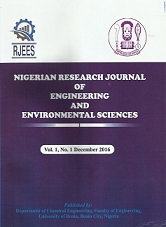Development of an Energy Detector for Cognitive Spectrum Sensing in Simulink Using a Software Defined Radio
Authors: Idubor, S.O. And Edohen, O.M.
DOI Info: http://doi.org/10.5281/zenodo.14566221
ABSTRACT
The aim of this work is to develop an energy detector that will function as a spectrum sensing cognitive radio that can be able to sense or detect the presence or absence of a primary user of a particular frequency channel. An Energy detector was modelled in Simulink and interfaced with a software defined radio to perform real time spectrum sensing, signal prediction and spectrum management decision. To detect the presence or absence of a primary user, the Energy detector measures the estimated noise power of a received signal over a specified duration and bandwidth with a sampling rate of 3 MHz and it then performs a threshold estimation of the received signal and then compares the signal level with the ambient noise level in the transmission channel occupied by a primary user. It then generates a 1/0 decision to indicate primary user present or absent in real time. Testing was done in real time so as to demonstrate the efficiency of the energy detector. The energy detector in MATLAB-Simulink interfaced with the software defined radio forms the Spectrum sensing cognitive radio. It was implemented and it performed spectrum sensing in real time and it was used to detect the presence or absence of a primary user in a selected radio frequency channel.
Affiliations: Department of Electrical and Electronic Engineering, Faculty of Engineering, University of Benin, PMB 1154, Benin City, Nigeria.
Keywords: Radio Frequency, Software Defined Radio, Cognitive Radio, Primary User, Secondary User, Spectrum Sensing
Published date: 2024/12/30









